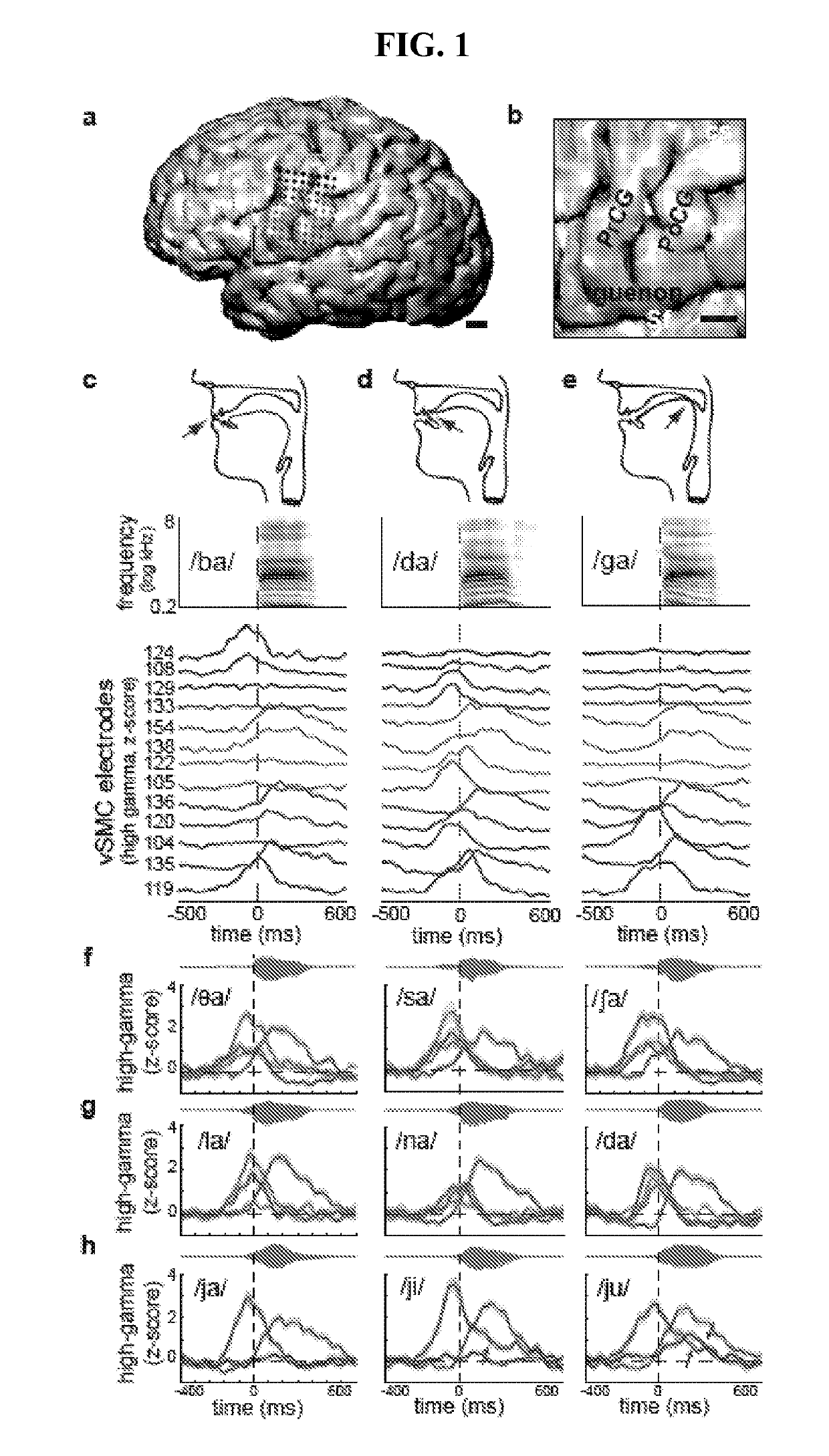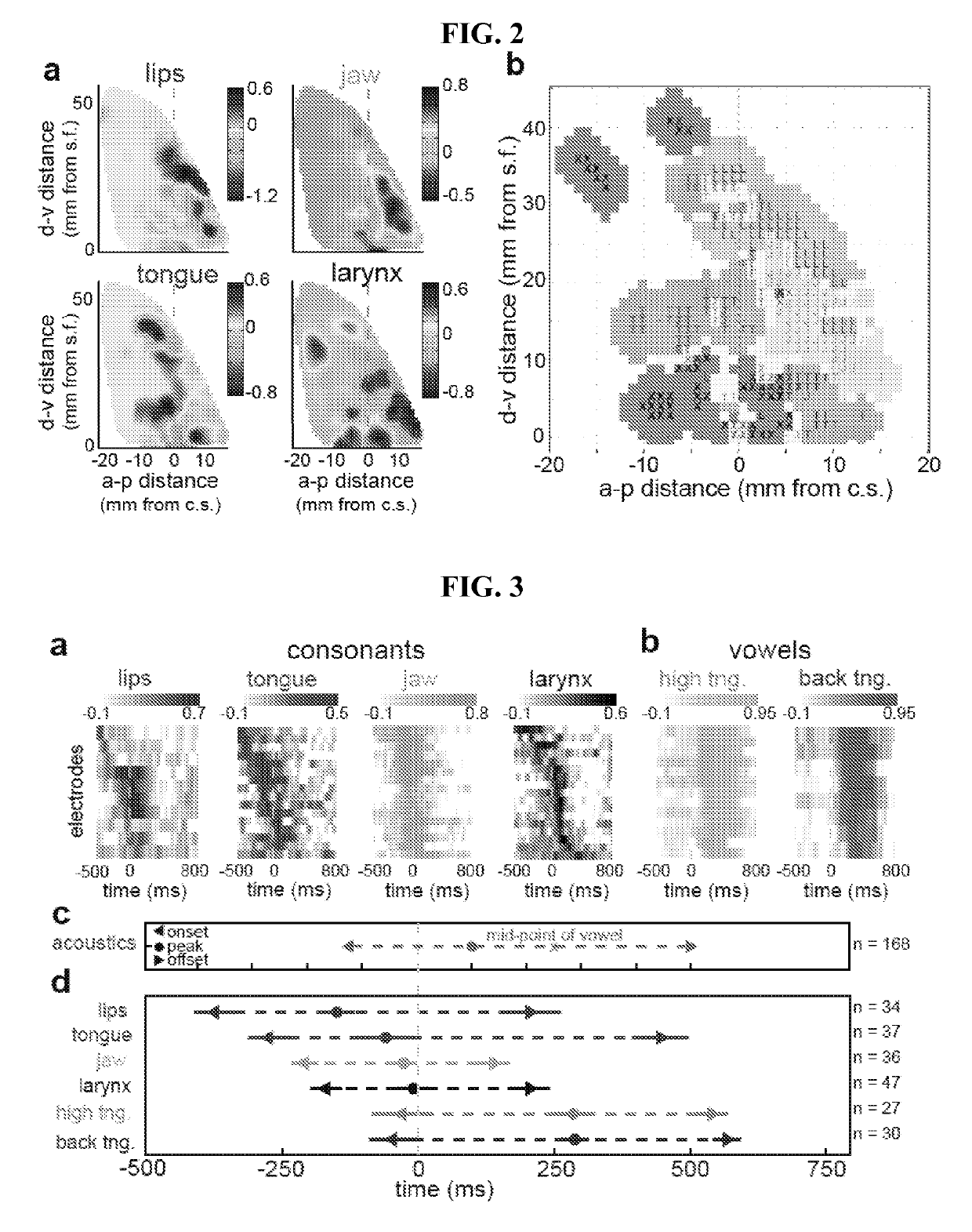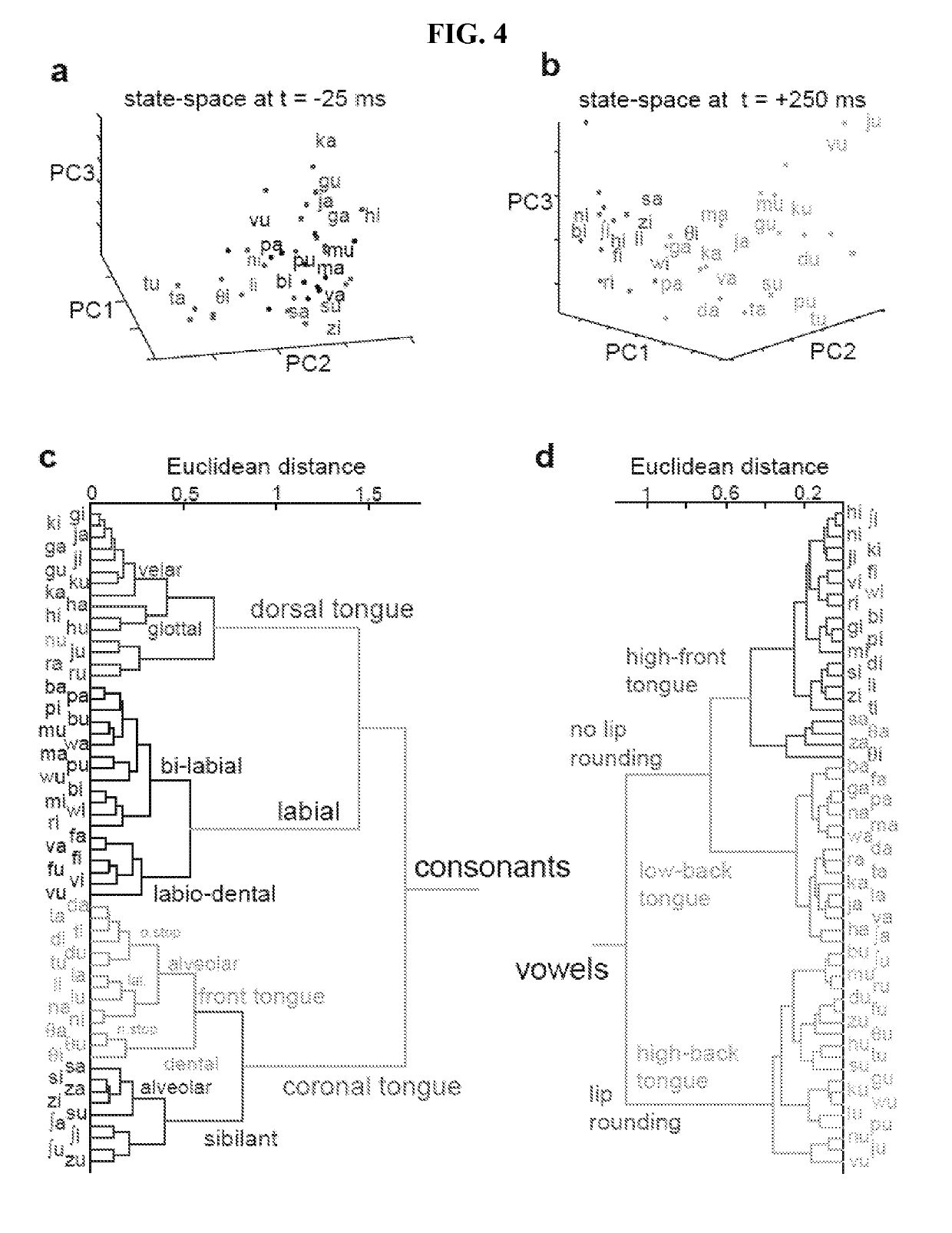Methods of decoding speech from the brain and systems for practicing the same
a speech and brain technology, applied in the field of speech decoding from the brain and systems for practicing the same, can solve the problems of network dynamics generating consonant-vowel syllables that cannot be uniquely determined by network dynamics, and decoders trained to predict across-vowel acoustic variability do a poor job at predicting within-vowel variability
- Summary
- Abstract
- Description
- Claims
- Application Information
AI Technical Summary
Benefits of technology
Problems solved by technology
Method used
Image
Examples
example 1
iology During Syllable Production
[0130]Cortical readings were aligned to acoustic onsets of consonant-to-vowel transitions (t=0) to provide a common reference point across CVs (FIG. 1, panels C-E). The focus was on the high-gamma frequency component of local field potentials (85-175 Hz), which correlates well with multi-unit firing rates. For each electrode, the time-varying high-gamma amplitude was normalized to baseline statistics by transforming to z-scores.
[0131]During syllable articulation, approximately 30 active vSMC electrode sites were identified per subject (˜1200 mm2, change in z-score>2 for any syllable). Cortical activity from selected electrodes distributed along the vSMC dorso-ventral axis is shown for / ba / , / da / , and / ga / (FIG. 1, panels C-E). The plosive consonants ( / b / , / d / , / g / ) are produced by transient occlusion of the vocal tract by the lips, front tongue, and back tongue, respectively, whereas the vowel / a / is produced by a low, back tongue position during pho...
example 2
epresentation of Articulators
[0133]To determine the spatial organization of speech articulator representations, how cortical activity at each electrode depended upon the movement of a given articulator (using a general linear model) was examined. Binary variables were assigned to four articulatory organs (lips, tongue, larynx, and jaw) used in producing the consonant component of each CV (FIG. 6). In FIG. 2, panel A, spatial distribution of optimal weightings for these articulators (averaged over time and subjects) are plotted as a function of dorsal-ventral distance from the Sylvian fissure and anterior-posterior distance from the central sulcus. Representations were found for each articulator distributed across vSMC (FIG. 2, panel A). For example, the lip representation was localized to the dorsal aspect of vSMC, whereas the tongue representation was more distributed across the ventral aspect.
[0134]To determine topographic organization of articulators across subjects, the greatest...
example 3
Articulator Representations
[0135]Because the time-course of articulator movements is on the scale of tens of milliseconds, previous approaches have been unable to resolve temporal properties associated with individual articulator representations. The timing of correlations between cortical activity and specific consonant articulators (using partial correlation analysis) was examined, and included two vowel articulatory features (back tongue & high tongue; FIG. 6).
[0136]Time-courses of correlations for electrodes with highest values were plotted, sorted by onset latency, are shown in FIG. 3, panel A. It was found that jaw, high tongue, and back tongue had very consistent timing across electrodes. Similar results were found for tongue, lips, and larynx, but with more variable latencies. Timing relationships between articulator representations were staggered, reflecting a temporal organization during syllable production: lip and tongue correlations began well before sound onset (FIG. 3...
PUM
 Login to View More
Login to View More Abstract
Description
Claims
Application Information
 Login to View More
Login to View More - R&D
- Intellectual Property
- Life Sciences
- Materials
- Tech Scout
- Unparalleled Data Quality
- Higher Quality Content
- 60% Fewer Hallucinations
Browse by: Latest US Patents, China's latest patents, Technical Efficacy Thesaurus, Application Domain, Technology Topic, Popular Technical Reports.
© 2025 PatSnap. All rights reserved.Legal|Privacy policy|Modern Slavery Act Transparency Statement|Sitemap|About US| Contact US: help@patsnap.com



